
Initiation of Action
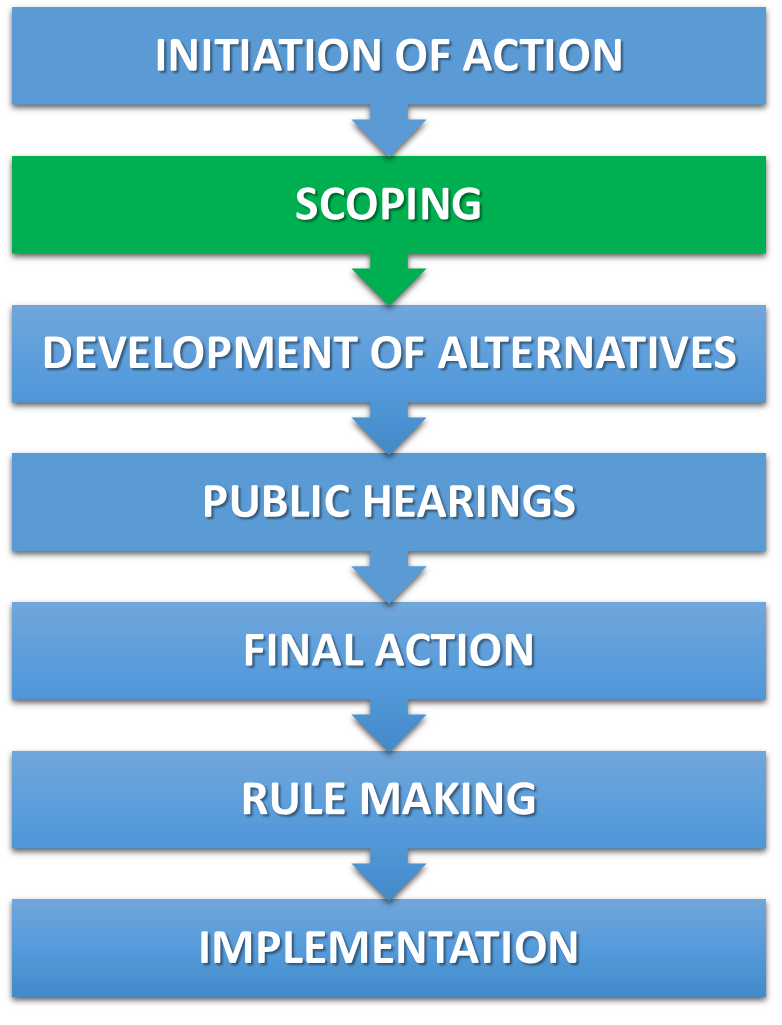
Scoping
During the scoping process, the Council gathers suggestions and ideas from stakeholders and others about how to solve a fishery problem or address a need. The Goal of scoping is to identify issues, potential impacts, and reasonable alternatives associated with the issues at hand so that reasonable management actions and alternatives can be developed.
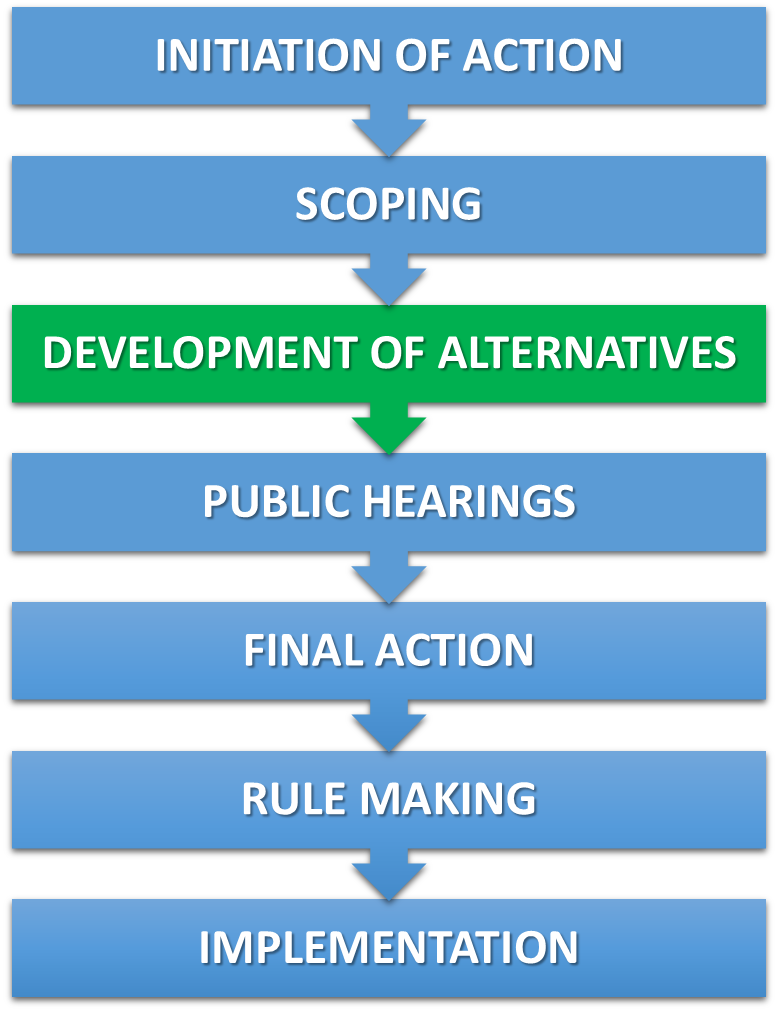
Development of Alternatives
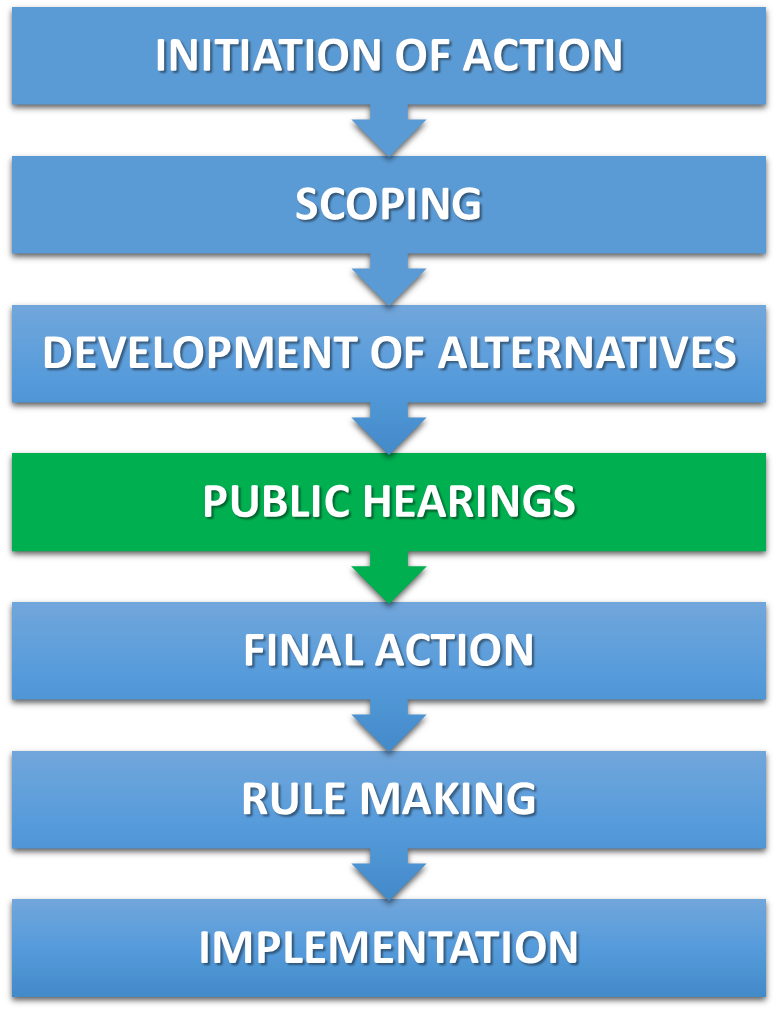
Public Hearings
The Council holds public hearings after identifying management options that can potentially solve a fishery issue. The purpose of public hearings is to gather feedback on potential impacts of the proposed alternatives and to suggest other possible alternatives as appropriate.
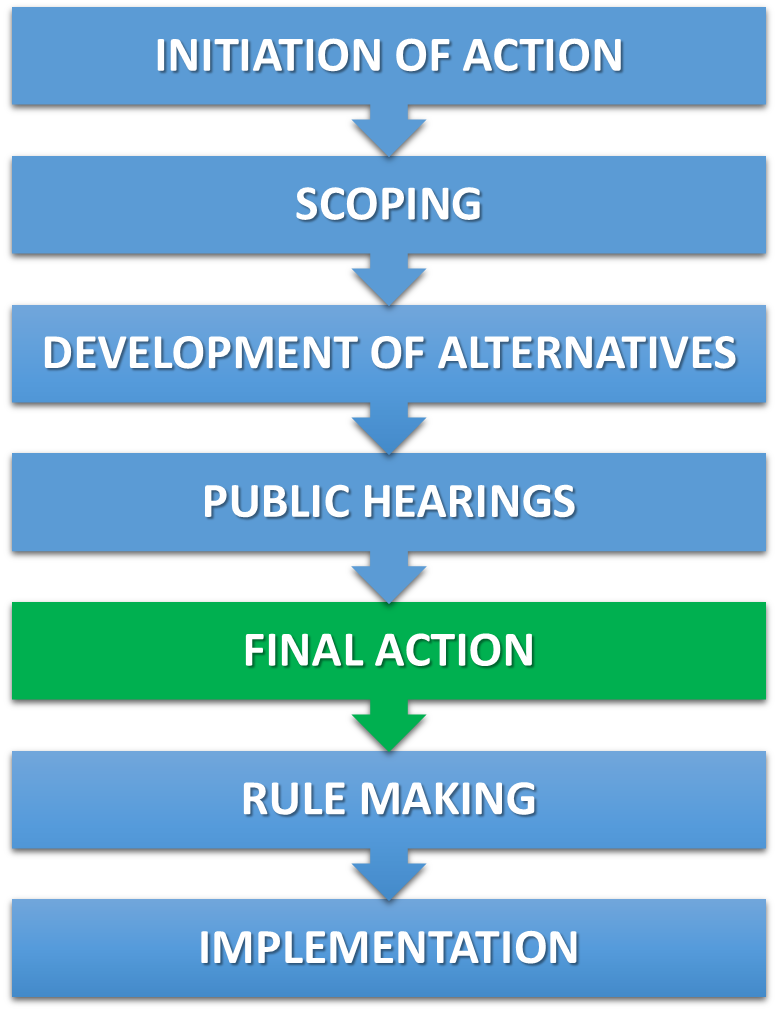
Final Action
After the public has had an opportunity to comment on proposed management actions, the Council takes final action by choosing an appropriate management strategy. Final action occurs publicly, during a Council meeting, after one last opportunity for public input. The Council then votes to forward the fishery management plan or amendment to the Secretary of Commerce for final approval and implementation.
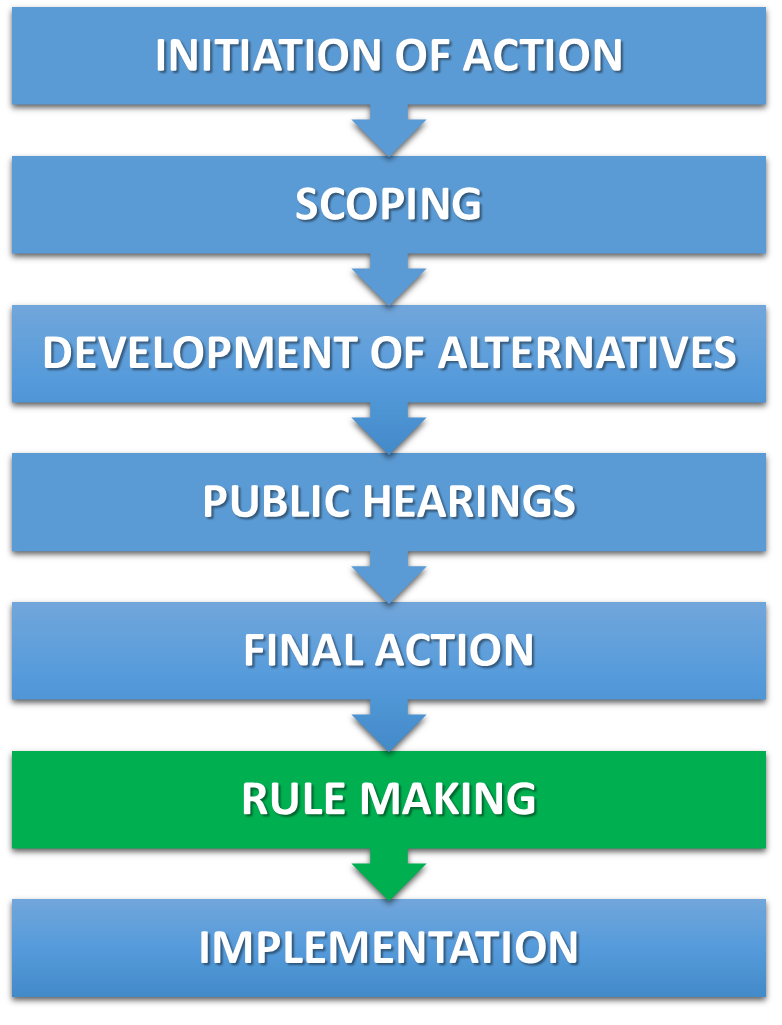
Rule Making
When the Council takes final action on a fishery management plan or amendment, it also deems a proposed rule to be necessary and appropriate to implement the actions in the fishery management plan or amendment and sends it to the Secretary of Commerce. The secretary opens 15 -60 day public comment period before deciding whether to approve, partially approve, or disapprove the proposed measure.
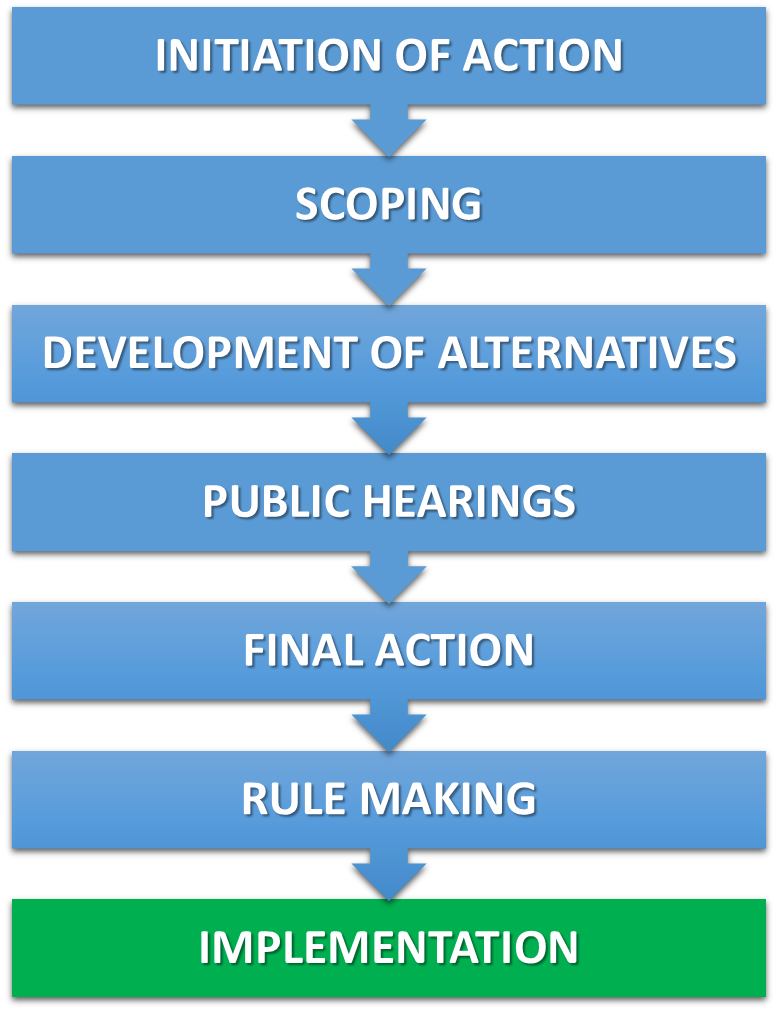
Implementation
After a fishery management plan or amendment is approved by the Secretary of Commerce, a final rule is published in the Federal Register implementing the management actions.







